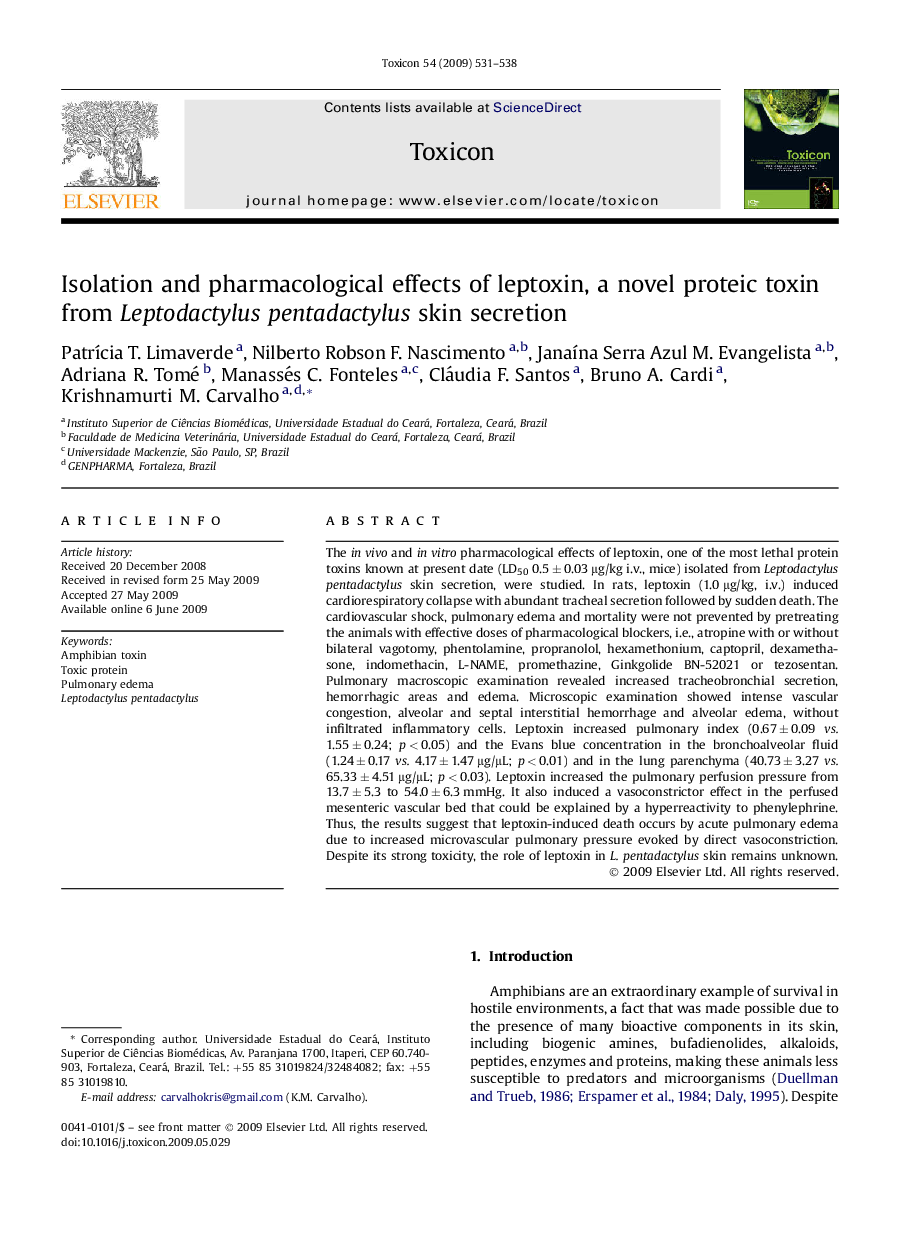| Article ID | Journal | Published Year | Pages | File Type |
|---|---|---|---|---|
| 2065199 | Toxicon | 2009 | 8 Pages |
The in vivo and in vitro pharmacological effects of leptoxin, one of the most lethal protein toxins known at present date (LD50 0.5 ± 0.03 μg/kg i.v., mice) isolated from Leptodactylus pentadactylus skin secretion, were studied. In rats, leptoxin (1.0 μg/kg, i.v.) induced cardiorespiratory collapse with abundant tracheal secretion followed by sudden death. The cardiovascular shock, pulmonary edema and mortality were not prevented by pretreating the animals with effective doses of pharmacological blockers, i.e., atropine with or without bilateral vagotomy, phentolamine, propranolol, hexamethonium, captopril, dexamethasone, indomethacin, L-NAME, promethazine, Ginkgolide BN-52021 or tezosentan. Pulmonary macroscopic examination revealed increased tracheobronchial secretion, hemorrhagic areas and edema. Microscopic examination showed intense vascular congestion, alveolar and septal interstitial hemorrhage and alveolar edema, without infiltrated inflammatory cells. Leptoxin increased pulmonary index (0.67 ± 0.09 vs. 1.55 ± 0.24; p < 0.05) and the Evans blue concentration in the bronchoalveolar fluid (1.24 ± 0.17 vs. 4.17 ± 1.47 μg/μL; p < 0.01) and in the lung parenchyma (40.73 ± 3.27 vs. 65.33 ± 4.51 μg/μL; p < 0.03). Leptoxin increased the pulmonary perfusion pressure from 13.7 ± 5.3 to 54.0 ± 6.3 mmHg. It also induced a vasoconstrictor effect in the perfused mesenteric vascular bed that could be explained by a hyperreactivity to phenylephrine. Thus, the results suggest that leptoxin-induced death occurs by acute pulmonary edema due to increased microvascular pulmonary pressure evoked by direct vasoconstriction. Despite its strong toxicity, the role of leptoxin in L. pentadactylus skin remains unknown.
